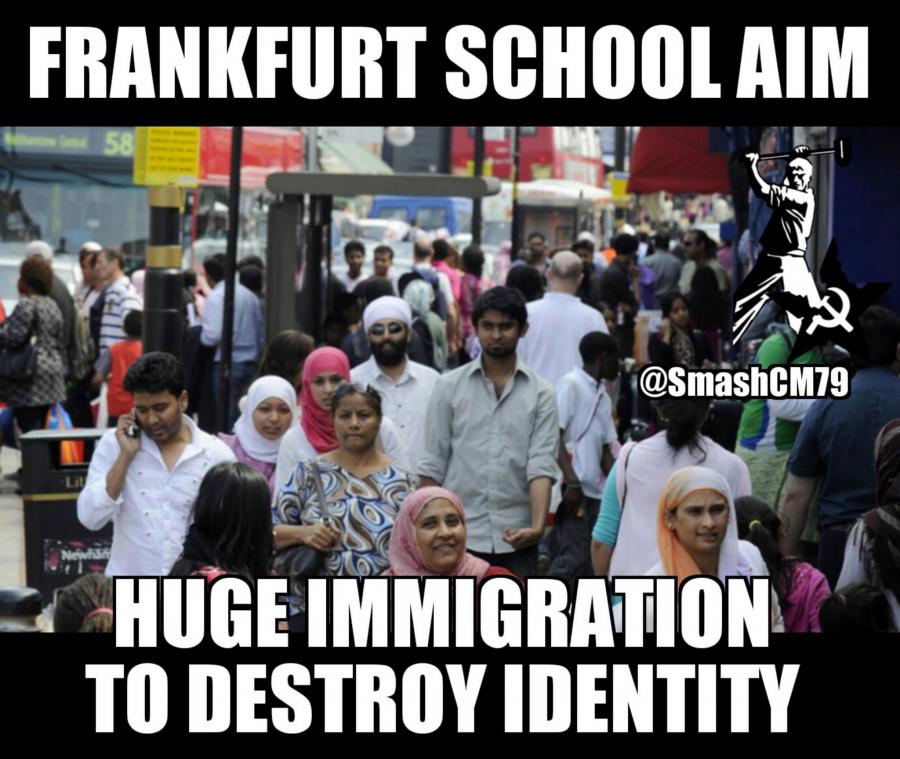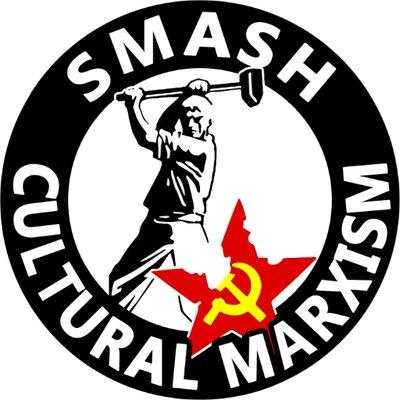
Exploring Breivik: A “Lone Wolf”s War against Cultural Marxism
When asking the question what cultural Marxism is, nobody can give a definite and simple answer. In this article, we will shed some light on this notion, and focus on how it informed Anders Breivik's murderous attacks.
Breivik and his fight against cultural Marxism
When used academically, cultural Marxism describes a discourse which as its roots in the Frankfurt School, which in short tries to condemn industrialization and mass capitalistic production. However, when used nowadays, cultural Marxism is more commonly viewed as a conspiracy theory reflecting the ideology of the Frankfurt School. This notion, in parallel with the idea of Political Correctness, started to be circulated since the early 1990s and sees cultural Marxism as a threat to modern (conservatively established) western culture. The essay New Dark Age: Frankfurt School and Political Correctness (1992) by Michael Minnicino gave rise to the definition of cultural Marxism and political correctness that is used today.
Similarly, the protagonist of this essay, Breivik, in his massive manifesto 2083: A European Declaration of Independence also touches upon the parallelism between cultural Marxism and political correctness in his rant against Cultural Marxists and the social elite they allegedly dominate. Thus, starting from Breivik, we attempt to trace the communities of anti-Cultural Marxism before and after his mass murders and the publication of the manifesto, in order to critically examine his positioning as a “Lone Wolf”. The line of thinking we will use, in order to support our main argument is that of the individual and online/offline communities.

The paths leading to Breivik
At first glance, Breivik’s brutal actions were seemingly triggered by the events of 9/11 and its seismic impact on worldwide media coverage. A war against terrorism was declared and is believed to have caused an outburst of islamophobia. However, long before 9/11, there were two very prominent essays deserving our attention: Fukuyama's End of History and The Last Man in 1989 and Samuel P. Huntington's Clash of Civilizations (1993). Fukuyama (1992) argues that “there is no ideology with pretensions to universality that is in position to challenge liberal democracy”.
Four years later, Huntington (1993) also responded by saying that the “fault lines” between civilizations have divided the west and the east into “us” and “them”, and “different civilizations compete for relative military and economic power and competitively promote their particular and religious values”. Both of them agreed that after the end of the cold war, liberal democracy was and will be established as the sole survivor in the western and international political scene.
After the end of the cold war, liberal democracy was and will be established as the sole survivor in the western and international political scene.
These opinions looked plausible, in light of the political scene and world problems in the twenty years before Breivik’s mass murders. As a bridge linking those old ideological frameworks to emerging social problems and conflicts, the core idea of cultural Marxism has gradually expanded its scope in western societies, also swallowing multiculturalism. According to Breivik, it was liberal democrats who created the ideology of political correctness and showed tolerance towards Muslims, thus leaving the ground open for the spread of Muslim culture across Europe.

Fjordman: an important source of Brevik’s manifesto
Studying Breivik’s manifesto, one can easily notice that Breivik was greatly influenced by Peder Nøstvold Jensen, a Norwegian blogger writing under the pseudonym of “Fjordman”. Breivik quotes and refers to his ideas no less than 111 times in his manifesto, sometimes simply copy-pasting entire tracts written by Fjordman. Sharing similar standpoints against multiculturalism, feminism, and Islam, Fjordman and Breivik both denounce the idea of cultural Marxism, and believe that the relationship between Europe and Islam is an ongoing war with many centuries of pedigree.
Therefore, all Europeans have to fight in order to save their current lifestyle and traditional culture. This further proves that Breivik was not really a “Lone Wolf” as he claimed, since he has also drawn ideas from others. Breivik was well integrated in a very specific New Right niche.
Interestingly, one of Fjordman’s posts on the website called Gates of Vienna also gives a clue about Breivik’s motivation for composing his 1500-page manifesto. Using the nickname “year2183”, he pointed out that it is far from enough for the anti-Islamic communities to fight Islam by means of democratic and peaceful tools. Instead, he considered violent actions as the only way to wipe out Muslim culture and its people in Europe. As Breivik stated, “our views are quite similar with the only exception of me being an actual armed resistance fighter” (p. 1405, Manifesto).
“Cultural Marxism: The name of the evil”
Cultural Marxism, as described by Fjordman, refers to the political and moral system guided by the principle of “political correctness”, an ideology shaping a deceptive form of communism claiming to act for the benefit of all human beings and aiming to construct a “communist utopia”.
In order to attain these goals, left wing multiculturalists or cultural Marxists whom Breivik describes as “traitors” (typically portrayed as political and intellectual elites) have been engaging in “politically correct” activities in different fields across nations. They help pushing forward the process of cultural colonization of the European continent and aim at destroying European social cohesion, identities and traditions, all of which had a rich history.
Cultural Marxists help pushing forward the process of cultural colonization of the European continent and aim at destroying European social cohesion, identities and traditions, all of which had a rich tradition.
Breivik shows his anti-cultural Marxism by first outlining his hostility towards the immigrant community. He used to live in Oslo where he (at least claims to) personally saw numerous Muslim gangs and non-natives creating social chaos (p. 1394, Manifesto). To his disappointment, the Norwegian government (in line with the ideology of multiculturalism) has turned his beloved city into a “broken shit hole” by catering to and looking after these “detestable” immigrants (p. 1392, Manifesto).
Meanwhile, outside Norway, the trend of Islamization was also gradually penetrating and endangering the whole of Europe. In a broad sense, this “cultural invasion” has turned Europeans into minority and western society is consequently facing the threat of a cultural genocide launched by the Muslim community.
“Armed resistance is the only rational way to protect the European civilization from cultural Marxism!”
For Breivik, cultural Marxism is the root cause for the destruction of European culture and society. He fulminates against all cultural Marxists who stand for multiculturalism, feminism, egalitarianism, humanism and so forth, because they pose a severe threat to the traditionally patriarchal European society. As he claims, “our major cities will remain ‘broken’ as long as multiculturalism is allowed to be the prevalent ideology, as long as cultural Marxists are allowed to set the agenda” (p. 1394, Manifesto).
Therefore, he insists on waging war against “cultural Marxists” and multiculturalist regimes at all costs in western societies and considers armed resistance the only rational approach. Moreover, he also offers systematic, informative, and detailed plans on launching terrorist attacks and recruiting people who share his ideas in his manifesto, so as to create a genuinely “purified” nation without Muslims and “traitors”.

Although the ideology of counter-jihad is found to be a major line of argument in Breivik’s manifesto and ideas, it is exactly his advocacy for violence and extreme actions against multiculturalism (particularly Muslims) that distinguishes him from other leading counter-jihadists, as claimed by Thomas Hegghammer, a senior researcher at the Norwegian Defense Research Establishment in Oslo. The manifesto is thus used for recruiting fighters like him to engage in the war against cultural Marxists and to consolidate a non-Muslim Europe.
Undoubtedly, Breivik’s ideology rests upon other right wingers and anti-cultural Marxists who have inspired him to challenge “hypocritical” politicians and intellectuals. Yet, at the same time, the manifesto as a repository of his ideas also becomes a useful reference for his followers or other would-be extremists to join the war against cultural Marxism.
What Breivik left to the world
Ideally, Breivik intended to spread both his manifesto and views to every person in the western world. This would mean that whomever interested in radical nationalism can make joint efforts in saving European civilization. Throughout his text, he repeatedly appeals to "millions" of Europeans who could and should follow his lead.
The number of Google searches of the item “Cultural Marxism” has generally increased after his massacre in 2011
And there might be evidence showing that the concept of Cultural Marxism has become more widely known after Breivik’s actions. The number of Google searches of the item “Cultural Marxism” has generally increased after Breivik's massacre in 2011, as illustrated in the following graph. It can therefore be presumed that Breivik may have left an impact on today’s radical right wing parties or the community against cultural Marxists. However, since the number of searches only started increasing in 2014, one is left to wonder whether Breivik's impact was all that direct. One possible explanation for this trend may be that more people started to worry about their traditional European values and habits being challenged after the wave of mass immigration in 2015. This is something Breivik highlighted in his manifesto as well.

"Cultural Marxism" on Google Trends https://trends.google.com/trends/explore?date=all&geo=US&q=cultural%20ma...
Furthermore, when browsing the websites of anti-cultural Marxism, we can always find typical eye-catching titles as follows:
“The Real Agenda Behind Mass Immigration”
“Immigrants Attacking Raping and Killing White Europeans”
These websites try to convince the public that more and more Europeans start to wake up and see the truth beneath the conspiracy of cultural Marxism, mainly centering on the issue of mass migration and the declining European culture. In fact, they may have a point.
In today’s Hungary, in addition to those small parties mentioned by Breivik, the governing party also has some radical views on cultural Marxism. The second biggest party in the Hungarian parliament is an even more radical right wing party. These facts suggest that these negative ways of thinking on cultural Marxism have escaped the margins. 79.9% of elected representatives in the Hungarian parliament support opinions about political correctness that are very similar to those of Breivik. Moreover, voices against cultural Marxism are stronger in Hungary than in the Netherlands or Belgium, thanks to billboard propaganda made by the government to fight against the “traitor” George Soros, who behaves like a true cultural Marxist and is now the main enemy of Hungary in the eye of the country's government.
Another example indicating the rise of this type of thinking in Europe after Breivik is the rise of Golden Dawn, a far right political party in Greece. It is currently recognized as the third power in the Hellenic Parliament, accounting for 7% in the national elections in 2015. In Western Europe, Schild en Vrienden is probably the most notorious far right movement aiming at smashing Cultural Marxism. Its official account on Facebook has almost 30 thousand followers so far, but it is not as influential as other political movements. Of course, none of today’s radicals would acknowledge that they have been influenced by a mass murderer, so we cannot measure his real influence accurately. We can only see how Breivik is part of the same niche as these other players.
Breivik and beyond
In October 2011, Pelle Billing and Kristian Stålne made a psychological analysis of Breivik. They wrote that the massacre was in fact an attack of the traditional value system on postmodern values. The duo sheds some light on how some of Breivik’s ideas are inconsistent and controversial. For example, he once claimed that “one of conservatism’s most important insights is that all ideologies are wrong”. However, his preferred view, conservatism is also an ideology – therefore it can also be wrong.
Breivik was not alone in terms of his views on cultural Marxism, even if his attacks set him apart from most others sharing this view.
In addition, rather than justify Breivik’s violent actions, they also point out that his ideas or insights indeed reflect some social and practical issues. Another example, the Scandinavian politics and media are too politically correct since they show attitudes of tolerance, equality and openness to everything – even traditional values, which ultimately leads to an unbalanced state. Therefore, they concluded that today’s Scandinavia is exactly what bred a person like Breivik.
The networked Wolf against Culture Marxism
As we have shown, Breivik was not alone in terms of his views on cultural Marxism, even if his attacks set him apart from most others sharing this view. He was an avid reader of some nationalist blogs, such as Gates of Vienna which is where he got inspired by Fjordman for most of his ideas. However, in 2008, he came to realize that these communities were not willing to take the necessary, or “violent” as he advocated, measures to win the war against cultural Marxism. The rest is history.
After Breivik’s attack, “pro-” and “anti-”cultural Marxists reacted differently, but the point was the same: the opposing side should be responsible for the horrible outcome. Erik Hellsborn, a Swedish Democrat from the anti-immigration party, stated that the attacks would never happen in a white, Islam-free country, implying that cultural Marxism should be blamed for everything.
The “other side” hopes that the attacks will also help the country to strengthen its force to fight against racism. Many experts, including Nick Lowles from the Hope Not Hate Campaign, also warned after the attacks that Breivik, though acting on his own, is in a sense not a “Lone Wolf”, because there are more and more people and communities following his beliefs. Breivik himself also becomes a template or format for other anti-cultural Marxists to fulfill their goals.
References
Fukuyama, F. (1992). The End of History and the Last Man. The Free Press: Macmillan, New York.
Goldstein, P. (1992). Theory, Totality, Critique: The Limits of Frankfurt School Critical Theory, Marxism & Modernity. University of Delaware.
Huntington, S. P. (1993). The Clash of Civilizations. Foreign Affairs.